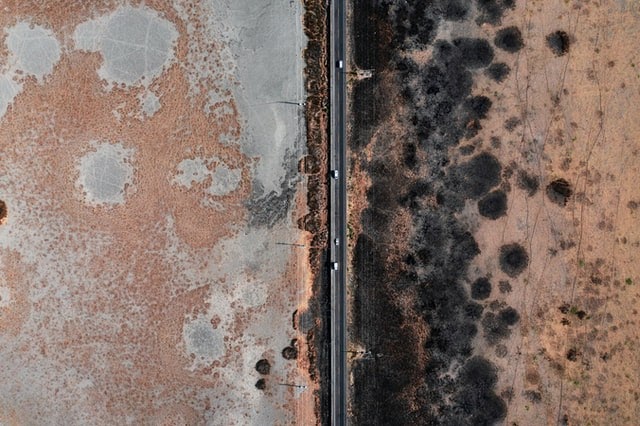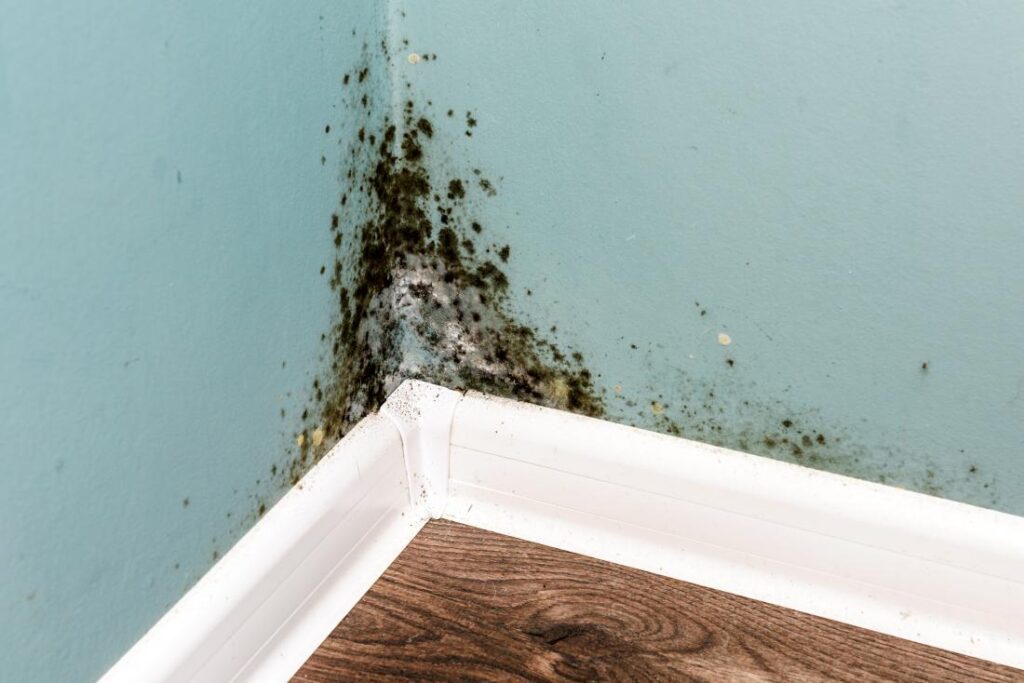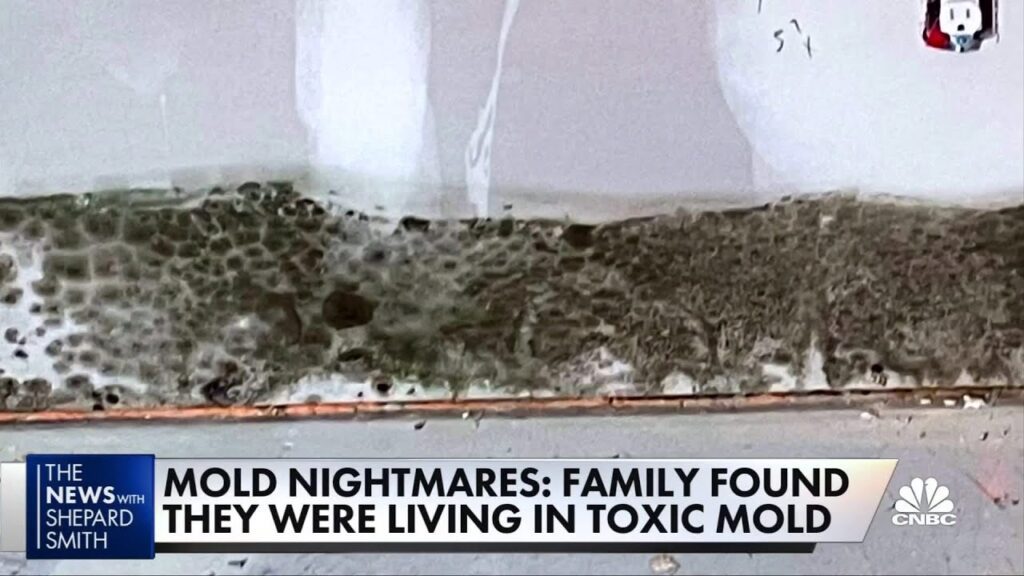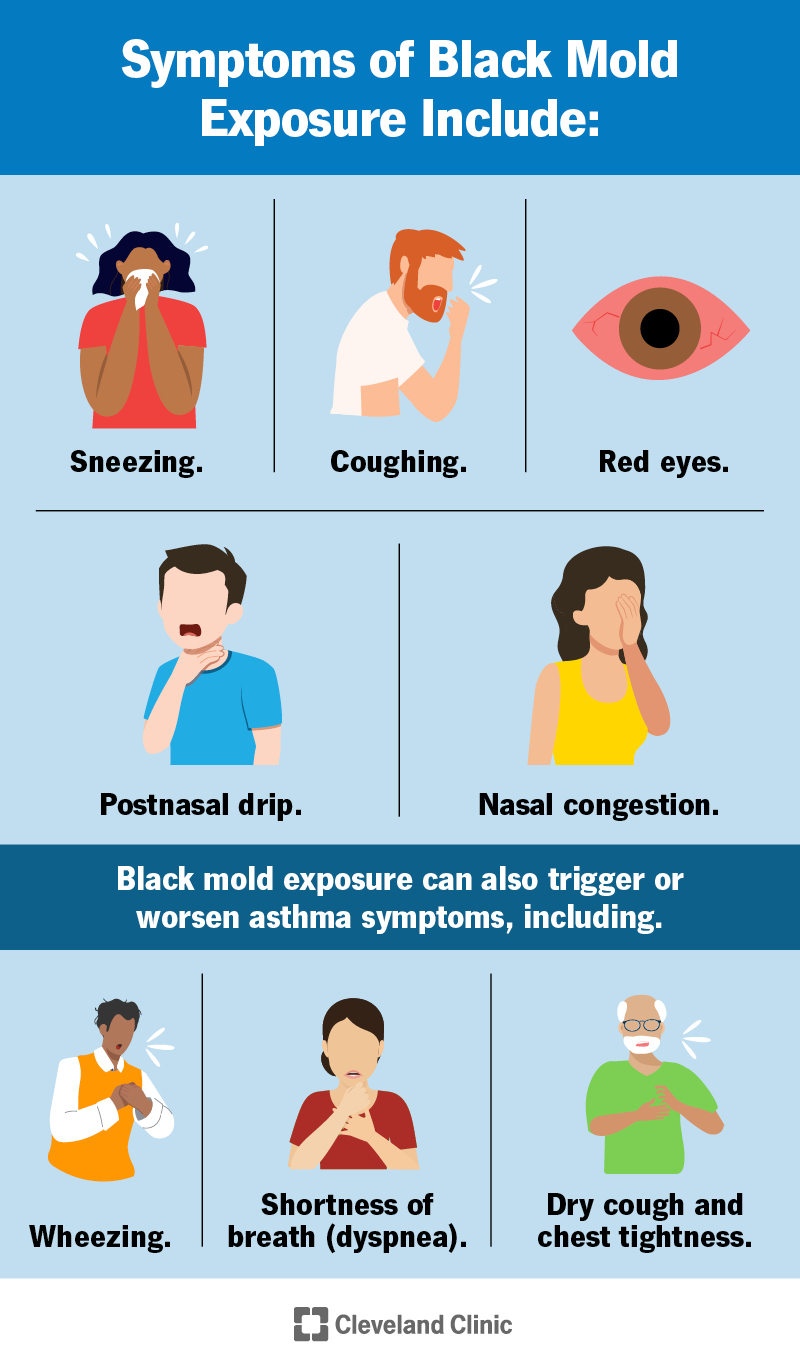Imagine living in a beautiful, cozy home, unaware of the unseen dangers lurking within its walls. The silent invader known as mold can quickly turn this dream into a nightmare. But at what point does mold become toxic? Understanding the threshold of mold toxicity is crucial for ensuring the safety and well-being of you and your loved ones. In this article, we will explore the signs and risks associated with mold exposure, shedding light on the hidden dangers that may be silently affecting your health.

Understanding Mold
Mold is a type of fungus that can be found both indoors and outdoors. It thrives in moist and damp environments, making it a common problem in many households. Understanding what mold is and how it grows is essential in order to effectively address and prevent mold issues in your home.
Definition of mold
Mold is a microscopic organism that belongs to the fungi kingdom. It reproduces by releasing spores into the air, which can settle on surfaces and grow into new mold colonies under the right conditions. It can vary in appearance, ranging from black, green, or white patches to a fuzzy or slimy texture.
Common types of mold
There are various types of mold that can be found in homes, with some being more common than others. Some of the most frequently encountered molds include:
- Cladosporium: This type of mold appears as green or brown spots and is commonly found on walls, carpets, and fabrics.
- Aspergillus: Aspergillus mold can appear in many colors and is often found on food, but can also be present in indoor environments.
- Stachybotrys chartarum: Also known as black mold, this type of mold is greenish-black in color and typically thrives in areas with excessive moisture, such as damp basements or bathrooms.
Conditions required for mold growth
Mold requires specific conditions to grow and thrive. The key factors that contribute to mold growth are:
- Moisture: Mold needs moisture to grow, so any areas with high humidity or water leaks are at risk. This includes damp basements, bathrooms, and areas affected by water damage.
- Warmth: Mold thrives in temperatures between 77°F and 86°F (25°C and 30°C), making indoor spaces with controlled heating ideal environments for mold growth.
- Food Source: Mold can feed on organic materials such as wood, drywall, fabrics, and even dust. These materials often provide the nutrients mold needs to grow.
- Oxygen: Like other living organisms, mold requires oxygen to survive and thrive. Adequate ventilation allows mold spores to circulate and settle onto surfaces.
The Impact of Mold
While mold may seem like a nuisance primarily due to its unsightly appearance and musty odor, it can also have a significant impact on your health. Understanding the potential health effects of mold exposure is crucial for protecting yourself and your loved ones.
Health effects of mold exposure
Exposure to mold can lead to a variety of health issues, especially for individuals who are sensitive or allergic to mold. The effects of mold exposure can range from mild to severe, depending on the individual and the extent of exposure. Some common health effects include:
- Respiratory problems: Mold spores, when inhaled, can cause respiratory issues such as coughing, wheezing, or shortness of breath. Individuals with pre-existing respiratory conditions like asthma may experience exacerbated symptoms.
- Allergic reactions: Mold exposure can trigger allergic reactions, including nasal congestion, sneezing, itchy or watery eyes, and skin irritation. These symptoms can be similar to hay fever or other seasonal allergies.
- Toxic reactions: In rare cases, certain molds can produce mycotoxins, which are toxic substances that can lead to more severe health issues. These toxic reactions can affect the nervous system, leading to symptoms such as headaches, lethargy, or even neurological damage.
It’s important to note that the severity of these health effects can depend on individual sensitivity, length of exposure, and the specific type and quantity of mold present.
Determining Mold Toxicity
Understanding the potential toxicity of mold is a crucial aspect of mold remediation. Not all molds are toxic, but some produce mycotoxins that can pose a health risk. Being able to determine mold toxicity can help in determining the appropriate course of action to address the issue effectively.
Types of mold toxins
Molds produce various types of mycotoxins, with some being more harmful than others. The most common types of mycotoxins produced by molds include:
- Aflatoxins: These mycotoxins are produced by certain types of Aspergillus mold and are known to be carcinogenic.
- Trichothecenes: Trichothecene mycotoxins are produced by various molds, including Stachybotrys chartarum (black mold). Exposure to these toxins can cause a wide range of symptoms, including respiratory issues, skin irritation, and neurological effects.
- Ochratoxin A: This mycotoxin is primarily produced by Aspergillus and Penicillium molds and is associated with kidney damage in animals. Although its effects on humans are still being studied, it is considered a potential health concern.
Threshold levels for toxicity
Determining the threshold levels for mold toxicity is a complex matter. The concentration of mold spores and mycotoxins required to cause adverse health effects can vary depending on the individual’s sensitivity, duration of exposure, and the specific type of mold. As such, it’s challenging to establish precise threshold levels for mold toxicity.
Individual susceptibility to mold
It’s important to recognize that individuals vary in their susceptibility to mold-related health effects. Some individuals may be more sensitive or susceptible to mold exposure, while others may show no apparent symptoms. Factors that can affect individual susceptibility include age, pre-existing health conditions, immune system strength, and genetic predispositions.
Recognizing Mold Contamination
Identifying mold contamination in your living environment is vital for taking appropriate action to address the issue promptly and effectively. Recognizing the visual signs and musty odor associated with mold, as well as conducting proper testing, can help identify the presence of mold.
Visual signs of mold
Mold often leaves visible signs of its presence. These signs can include:
- Discoloration: Mold can appear as black, green, brown, or white patches on various surfaces, such as walls, ceilings, floors, and even furniture.
- Staining: Mold growth can cause staining or discoloration on materials like fabric, carpeting, and wallpaper.
- Texture: Mold may have a fuzzy, cotton-like texture or appear slimy and wet.
It is important to note that mold can sometimes grow in hidden or hard-to-reach areas, such as behind walls or under carpets. Therefore, it is crucial to be thorough in inspecting your surroundings for any signs of mold contamination.
Musty odor associated with mold
One of the most common indicators of mold presence is the characteristic musty odor it emits. If you notice a strong, persistent musty smell in your home, it may indicate that mold is growing nearby. This odor is often likened to a damp, earthy smell and is more noticeable in enclosed spaces or areas with poor ventilation.
Testing for mold contamination
In cases where visual signs or odor suggest the presence of mold, it may be necessary to conduct mold testing to confirm its existence and identify the type and extent of contamination. Professional mold testing can be performed by certified experts who collect samples and analyze them in a laboratory. DIY mold testing kits are also available for simpler assessments, providing you with some initial information about the mold levels in your home.

Understanding Mold Spores
Mold spores play a significant role in the spread and proliferation of mold. Understanding their characteristics and the potential health risks associated with mold spores is essential for comprehending the impact of mold on indoor air quality and human health.
Mold spore characteristics
Mold releases tiny spores into the air as a means of reproduction. These spores are lightweight and can be easily transported by air currents or attached to clothing, pets, or other surfaces. Some important characteristics of mold spores include:
- Size: Mold spores are microscopic, typically ranging from 3 to 100 microns in size. Their small size allows them to remain airborne for extended periods, making inhalation a common route of exposure.
- Number: Indoor environments can contain varying levels of mold spores, with normal background levels usually being present. However, elevated mold spore counts may indicate a significant mold problem.
- Durability: Mold spores are resilient and can survive in harsh conditions, such as extreme temperatures or dry environments. This durability enables them to remain dormant until suitable conditions for growth emerge.
Potential health risks associated with mold spores
Inhalation of mold spores can potentially pose health risks, particularly for individuals who are sensitive, allergic, or have pre-existing respiratory conditions. The health risks associated with mold spores include:
- Respiratory issues: When mold spores are inhaled, they can trigger respiratory symptoms such as coughing, wheezing, or nasal congestion. Prolonged exposure to mold spores may even contribute to the development or worsening of respiratory conditions like asthma.
- Allergic reactions: Mold spores can lead to allergic reactions in susceptible individuals, causing symptoms such as sneezing, itchy eyes, skin rashes, and throat irritation. These allergic reactions resemble those experienced during common seasonal allergies.
- Infection: While rare, certain types of molds can cause infections in individuals with weakened immune systems, such as those undergoing chemotherapy or organ transplant recipients. These infections can affect the skin, respiratory system, or other organs.
Airborne mold spores can serve as a significant indicator of indoor air quality and can contribute to various health issues when present in high concentrations.
High-Risk Environments
Certain environments are more prone to mold growth due to specific conditions that favor its development. Understanding the common locations and factors that contribute to mold growth can help you identify and prevent mold growth in high-risk areas of your home.
Common locations for mold growth
Mold can occur in various locations within a home, but some areas are more susceptible to mold growth than others. Common locations for mold growth include:
- Bathrooms: Bathrooms often have high humidity levels due to showers, baths, and inadequate ventilation. Moisture buildup in these areas can provide an ideal breeding ground for mold.
- Basements: Basements are prone to dampness, especially if they are below ground level or have insufficient waterproofing. Cracks in the foundation or plumbing leaks can contribute to excess moisture, making basements a common place for mold growth.
- Kitchens: Kitchens are often exposed to moisture from cooking, dishwashing, and leaks from pipes or appliances. Combined with warm temperatures, these conditions create a favorable environment for mold growth.
- Laundry rooms: Laundry rooms can become humid and damp, especially if there is poor ventilation or a lack of proper drainage for washing machines.
Factors that contribute to mold growth
While moisture is the primary factor that contributes to mold growth, several other factors can exacerbate the problem. These include:
- Leaking pipes and plumbing: Any type of water leakage can create a moist environment suitable for mold growth. Leaking pipes, roof leaks, or plumbing issues should be promptly addressed to prevent mold from taking hold.
- Poor ventilation: Insufficient airflow and inadequate ventilation can promote moisture buildup and prevent damp areas from drying properly. Areas with poor ventilation, such as bathrooms or basements, are particularly susceptible to mold growth.
- High humidity: High humidity levels can foster mold growth, especially in areas where humidity exceeds 60%. Humidity can be controlled with dehumidifiers or by improving ventilation.
- Water damage: Any areas affected by water damage, such as after a flood or a leaking roof, are at high risk for mold growth. It’s crucial to thoroughly dry and clean these areas promptly to prevent mold infestation.
By addressing these factors and taking preventive measures, you can significantly reduce the risk of mold growth in your home.

Health Symptoms Associated with Mold
Exposure to mold can lead to a variety of health symptoms, ranging from respiratory issues to neurological symptoms. Recognizing these symptoms is essential for early detection and prompt action to address mold-related health concerns.
Respiratory issues
One of the most common health symptoms associated with mold exposure is respiratory problems. Inhaling mold spores can irritate the respiratory system and trigger symptoms such as:
- Coughing: Persistent coughing or throat irritation can occur as a result of mold spores irritating the delicate lining of the respiratory tract.
- Wheezing: Some individuals may experience wheezing, a high-pitched whistling sound during breathing, often associated with asthma or other respiratory conditions that may be worsened by mold exposure.
- Shortness of breath: Mold exposure can lead to a feeling of breathlessness or difficulty breathing, especially in individuals already prone to respiratory issues like asthma or chronic obstructive pulmonary disease (COPD).
If you experience any persistent or worsening respiratory symptoms when indoors or in specific areas of your home, it is important to consider the possibility of mold as a potential cause.
Allergies and asthma
Mold can trigger allergic reactions in individuals who are sensitive or allergic to its spores. These reactions may manifest as:
- Sneezing: Frequent and recurrent sneezing is a common allergic response to mold exposure. It may occur immediately upon entering a mold-contaminated area.
- Itchy or watery eyes: Mold spores can irritate the eyes, leading to redness, itching, or excessive tearing.
- Skin irritation: Direct contact with mold or its spores can cause skin rashes or irritation, particularly in individuals with sensitive skin or pre-existing dermatological conditions.
- Hay fever-like symptoms: Mold allergies can produce symptoms similar to hay fever, including nasal congestion, runny nose, and sinus pain.
Individuals with a history of asthma may experience heightened asthma symptoms, such as increased wheezing or asthma attacks, when exposed to mold spores.
Neurological symptoms
Although rare, exposure to certain molds and their toxins can lead to neurological symptoms. These symptoms may include:
- Headaches: Mold exposure can trigger persistent headaches, ranging from mild to severe, often accompanied by fatigue or confusion.
- Difficulty Concentrating: Some individuals may experience difficulties with focus, memory, or cognitive function when exposed to mold for an extended period.
- Dizziness or Vertigo: Mold exposure has been linked to feelings of dizziness or lightheadedness, which may be more pronounced in susceptible individuals.
Neurological symptoms associated with mold exposure typically occur in cases where individuals have been exposed to high concentrations of mycotoxins or in individuals with specific sensitivities or vulnerabilities.
Testing and Assessment
If you suspect mold contamination in your home, it is essential to conduct proper testing and assessment to confirm the presence of mold, determine the extent of contamination, and identify the specific type of mold present.
Professional mold testing
Professional mold testing entails hiring a certified mold inspector who will collect samples from your home. These samples are then sent to a laboratory for analysis, allowing for the identification of mold species and the quantification of mold spore levels. Professional testing can provide reliable and comprehensive results, which are helpful in understanding the severity of the mold problem.
DIY mold testing kits
For simpler and more affordable assessments, DIY mold testing kits are available. These kits typically include materials such as petri dishes or adhesive strips to collect samples. Following the instructions provided, you can collect samples from suspect areas and send them to a laboratory for analysis. While DIY kits can give you some initial information about mold levels, their accuracy may vary, and they may not provide detailed information about specific mold species.
Visual assessment of mold contamination
In addition to testing, a visual assessment can also be conducted to identify visible signs of mold growth. This involves a thorough inspection of your home, focusing on areas prone to moisture, such as bathrooms, kitchens, basements, or areas that have experienced water damage. Look for signs of discoloration, staining, or a musty odor, as these may indicate the presence of mold.
It is important to note that professional inspection and testing are often recommended for a comprehensive understanding of the mold situation in your home. This allows for more accurate identification, assessment, and appropriate action to be taken.

Mold Removal and Remediation
Once mold contamination has been confirmed, it is crucial to address the issue promptly and effectively. Mold removal and remediation are necessary steps to ensure the safety and health of individuals living in the affected environment.
When to consider professional mold remediation
While minor mold problems can sometimes be addressed through DIY methods, certain situations require professional mold remediation. It is recommended to consider professional assistance in the following scenarios:
- Extensive mold growth: If the mold contamination covers a large area, typically more than 10 square feet, professional remediation is advisable. Extensive growth can be indicative of underlying moisture issues or more severe mold problems.
- Toxic mold: If testing reveals the presence of toxic molds or mycotoxins, it is important to involve professionals who have the expertise and necessary equipment to safely remove and remediate the affected areas.
- HVAC contamination: Mold growth in the heating, ventilation, and air conditioning (HVAC) system can lead to the distribution of mold spores throughout the entire property. In such cases, professional remediation is crucial to ensure proper cleaning and restoration of the HVAC system.
Steps involved in the mold removal process
Professional mold removal follows a systematic process to ensure effective elimination of mold contamination. The steps involved in mold removal typically include:
- Containment: Professionals will establish containment measures using barriers and negative air pressure systems to prevent the spread of mold spores during the removal process.
- Removal: Affected materials, such as drywall, carpeting, or insulation, that cannot be salvaged are safely removed and discarded following industry guidelines to prevent cross-contamination.
- Cleaning: All surfaces and areas affected by mold are thoroughly cleaned using specialized cleaning agents and techniques to remove mold spores and ensure proper disinfection.
- Drying and dehumidification: The affected area is dried and dehumidified to prevent future mold growth and restore proper moisture levels.
- Prevention: Professionals will provide recommendations on preventive measures to avoid mold recurrence, such as improving ventilation, addressing moisture sources, and implementing routine maintenance practices.
Precautions for DIY mold cleanup
In cases where DIY mold cleanup is feasible, it is important to take certain precautions to ensure your safety and avoid further contamination. These precautions include:
- Protective equipment: Wear personal protective equipment such as gloves, goggles, and a respiratory mask to prevent direct contact with mold and inhalation of mold spores.
- Containment: Isolate the affected area to prevent the spread of mold spores to other parts of the home. Utilize barriers such as plastic sheets and turn off HVAC systems to minimize air movement.
- Proper cleaning: Use appropriate cleaning agents, such as a mixture of detergent and water, or commercial mold cleaners, to scrub and remove mold from affected surfaces.
- Thorough drying: Ensure proper drying of the cleaned area to prevent future mold growth. Use fans, dehumidifiers, or open windows to improve ventilation and reduce moisture levels.
- Monitor for recurrence: Regularly inspect and monitor the cleaned area for any signs of mold regrowth. If mold returns or there is persistent moisture, it may be necessary to consult a professional for further assistance.
By following these precautions, you can effectively clean up minor mold problems. However, always remember that professional remediation is recommended for extensive or toxic mold contamination.
Preventing Mold Growth
Prevention is the key to avoiding serious mold issues in your home. By controlling moisture levels, ensuring proper ventilation, and implementing regular cleaning and maintenance practices, you can significantly reduce the risk of mold growth.
Controlling moisture and humidity levels
To prevent mold growth, it is crucial to control moisture and humidity levels in your home. Some effective measures include:
- Address leaks promptly: Fix any plumbing leaks or roof leaks immediately to prevent moisture buildup and the risk of mold growth.
- Monitor humidity levels: Keep an eye on indoor humidity levels and maintain them between 30% and 50%. Use dehumidifiers in areas with high humidity, such as basements or bathrooms.
- Proper ventilation: Ensure good airflow and ventilation throughout your home. Use exhaust fans in bathrooms and kitchens, open windows to allow fresh air in, and use ceiling fans to promote air circulation.
- Use moisture barriers: Install moisture barriers, such as plastic sheeting or waterproof coatings, in areas prone to moisture, such as basements or crawl spaces, to prevent water infiltration.
Proper ventilation to prevent mold
Proper ventilation is essential in preventing mold growth as it helps to reduce excess moisture and improve air quality. Some ventilation practices to consider include:
- Bathroom ventilation: Use exhaust fans or open windows while showering or bathing to quickly remove excess moisture from the air.
- Kitchen ventilation: Utilize range hoods or exhaust fans while cooking to reduce humidity and prevent moisture buildup.
- Attic and crawl space ventilation: Ensure proper attic and crawl space ventilation, such as ridge vents, soffit vents, or crawl space vents, to prevent moisture accumulation in these areas.
Regular cleaning and maintenance
Regular cleaning and maintenance practices can help prevent mold growth and ensure a healthy living environment. Consider the following guidelines:
- Clean up spills and leaks: Promptly clean up any spills or leaks to prevent moisture from seeping into surfaces and creating a conducive environment for mold growth.
- Regularly clean and dry surfaces: Clean and dry surfaces prone to moisture, such as bathroom walls and shower curtains, to prevent the buildup of mold-friendly conditions.
- Periodically clean air conditioning systems: Clean and maintain air conditioning systems, including filters and ducts, to prevent moisture buildup and the circulation of mold spores throughout your home.
- Regularly inspect and clean hidden areas: Regularly inspect hidden areas prone to moisture, such as under sinks or behind appliances, and clean them as necessary.
- Control indoor humidity: Consider using a hygrometer to monitor indoor humidity levels and take appropriate action if levels exceed recommended thresholds.
By incorporating these preventive practices into your routine, you can significantly reduce the risk of mold growth and maintain a healthier living environment.
In conclusion, understanding mold, its impact on health, and the measures to prevent and remediate mold contamination is crucial for maintaining a safe and mold-free living environment. By recognizing the signs of mold, conducting proper testing and assessment, and taking prompt action to address the problem, you can protect yourself and your loved ones from the potential health risks associated with mold exposure. Remember to always consult professionals when necessary, especially for extensive or toxic mold contamination, and prioritize preventive measures to ensure a healthy home for years to come.
